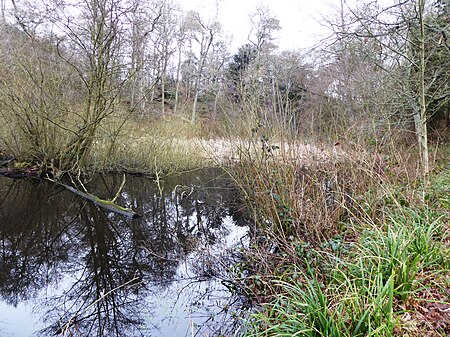Collingwood Nature Reserve
Kent Wildlife Trust

Collingwood is a 3-hectare (7.4-acre) nature reserve south of Hawkhurst in Kent. It is managed by the Kent Wildlife Trust.This reserve is woodland which has many exotic species as well as native trees. It is centred on a lake which has birds such as mallards, kingfishers and moorhens.There is access from Stream Lane.
Excerpt from the Wikipedia article Collingwood Nature Reserve (License: CC BY-SA 3.0, Authors, Images).Collingwood Nature Reserve
Stream Lane, Tunbridge Wells
Geographical coordinates (GPS) Address Nearby Places Show on map
Geographical coordinates (GPS)
| Latitude | Longitude |
|---|---|
| N 51.035 ° | E 0.509 ° |
Address
Stream Lane
Stream Lane
TN18 4RD Tunbridge Wells
England, United Kingdom
Open on Google Maps








